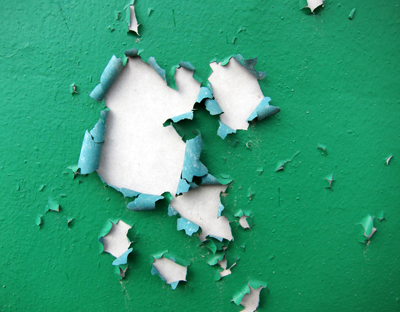Until the 1950s, almost all coatings used inside and outside the house were solvent-based—oil paint. It worked well, but was time-consuming to apply, took at least a day to dry, emitted strong odors, and had to be cleaned up with potent solvents like turpentine. Then came the postwar housing boom, gypsum drywall replacing plaster, and a paint that dried in a few hours and cleaned up with soap and water. It solved a lot of problems, and today most of the interior and exterior coatings are water-based—latex paint.
The many categories and finishes of each type of paint can create confusion. You may even come across claims that there’s one paint for molding and another for trim—even though they’re the same paint. Buzzwords like “infused crosslinking” and “copolymer emulsion” make it tough to figure out what’s in the can and where to use it. Below are some key definitions and important points to consider when you select paint.
Alkyd
This is oil-based paint made with a modern synthetic resin (alkyd) instead of older-style natural resins such as linseed oil—a synthetic oil paint. It’s tough, durable, washable, and often specified for kitchens, baths, and particularly woodwork. It produces a smooth finish and dries flat, meaning that traces of brushstrokes tend to flatten out and disappear, a desirable feature for trim. Alkyd cleans up with turpentine or mineral spirits. Drying time is usually overnight, depending on temperature and humidity. But because the use of oil-based paint has been restricted due to the amount of VOCs (volatile organic compounds) they contain, many areas have banned its sale.
Acrylic
Acrylic is the water-based equivalent of alkyd—a synthetic latex paint. It’s also durable, and is the water-based formulation often recommended for high-use areas like kitchens and baths. It dries faster than oil-based paint, emits fewer odors, and contains smaller amounts of VOCs. And then there’s the main reason for the popularity of latex: Everything cleans up with soap and water. Paint labeled “100 percent acrylic with all-acrylic binders” is widely considered the best variety. It’s easy to apply, scrubbable, and chip-resistant, and it retains a high degree of color scrub and sheen as it ages. In a conditioned indoor space, drying time is usually only a few hours.
Interior vs. Exterior

Interior and exterior paints are not interchangeable; they are formulated differently. Interior paints are made to dry harder than exterior paints, which makes them less flexible but more scrubbable. Outside, flexibility helps paint withstand extremes of weather. Also, additives used mostly in exterior paint improve resistance to mold formation and fading from sunlight. It’s easiest to stick with what’s already there: a water-based topcoat over a previous coat of water-based paint, or oil-based over a previous coat of oil-based paint. A switch from oil-based to acrylic will require special preparations—coating an old oil-based paint with latex can cause the underlying layer to flake and lift, sometimes within a matter of hours. If you are switching from oil to latex, try a test-patch application of oil-based primer, let it dry at least 24 hours, then test a finish coat of latex. To discover what’s on the wall, clean and dry a sample spot and rub the area with a swab soaked in denatured alcohol. If the paint comes off, it’s water-based; if it doesn’t, it’s oil-based.
Finishes
Flatter finishes generally conceal more defects, while glossier finishes highlight them. Flat non-shiny finishes also tend to look best on walls and ceilings, while glossier finishes look best (and are easier to clean) on woodwork. It sounds simple, but manufacturers use a bewildering array of words to describe the range from flat to glossy. Although the best way to decide is to buy a pint and test it, here’s a rundown of the differences:
- Flat or matte—reflects the least amount of light and gives a rich finish to deep colors.
- Satin, silk, eggshell, or low-luster—has some shine and usually means the paint is more washable than flat/matte.
- Semi-gloss—sometimes used on walls in kitchens and baths, but more often on woodwork.
- Gloss or high-gloss—highly reflective and can be glaring on trim next to a flat wall paint and nearly blinding in a brightly lit kitchen.
Coverage
A figure for the square footage covered per gallon appears on the paint can; it’s a number that tends to be optimistic. For a comparison, search the Web for one of the many paint calculators, generally based on coverage estimates of 300 to 400 square feet per gallon.
Color

You can obtain samples from stores, and on the Web you’ll find online design programs (many from paint manufacturers) with palettes displaying millions of possible combinations. The trick is to translate the color you have in mind to the paint that finally appears on the wall, rolled on or brushed out, in lamplight or sunlight. Swatches can help, as long as you try them in different light on different walls. But for large projects that can require buying several gallons, painting a small sample area is a wise move.
Paint Ratings

The best source for unbiased paint ratings is Consumer Reports, which regularly conducts accelerated aging and exposure tests on paints from many manufacturers. The most eye-opening result? Some of their top-rated products performed better than more expensive paints and cost $10 to $20 less per gallon.


